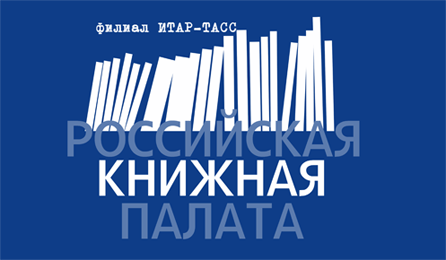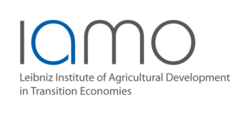Logunova I. V., Urodovskikh V. N. Dynamics of the peasant (private) farms development during the agrarian reform (1991–2001) in the Central Black-Earth Region // The Russian Peasant Studies. 2021. V.6. №4. P. 65-86.
DOI: 10.22394/2500-1809-2021-6-4-65-86
Annotation
The article presents the results of the structural-dynamic analysis of the development of peasant (private) farms under the agricultural reform of 1991-2001 in the Central Black-Earth Region. The research is based on both published and unpublished sources—materials from the archives of the State Statistics Committee of the Russian Federation, data of the territorial statistical bodies, from statistical collections and regulatory legal acts. Statistical data is presented in tables and graphs. The study of the dynamics of the farms’ development in the period under study allowed the authors to identify general features of this process in the Central Black-Earth Region and its peculiarities in different areas of this region. The authors analyzed the number of farms, their average size, and the size of their land, and conclude that during the agrarian reform of 1991-2001, farmers of the Central Black-Earth Region were forced to fight for survival. Therefore, farms of extremely small size, in a poor financial situation and created by come-and-go people were eliminated; they made up a third of all farms. By 2001, the number of farmers had stabilized, there was a 1.5–2-fold increase in the area of farmers’ land and in the size of the average farm. Farmers who managed to pass the ‘test of strength’ found new opportunities for development.
Keywords
Agrarian reform, farmers, peasant (farmer) economy, Central Black-Earth Region, number of farms, average size of farm, land area of farms.
About the authors
Logunova Inna V., PhD (History), Associate Professor, Department of Management and General Humanities, Lipetsk Branch of the Financial University under the Government of the Russian Federation; Internatsionalnaya St. 12B, 398000 Lipetsk.
E-mail: This email address is being protected from spambots. You need JavaScript enabled to view it.
Urodovskikh Viktor N., PhD (Engineering), Associate Professor, Department of Accounting and Information Technologies in Business, Lipetsk Branch of the Financial University under the Government of the Russian Federation; Internatsionalnaya St., 12B, 398000 Lipetsk.
E-mail: This email address is being protected from spambots. You need JavaScript enabled to view it.
Chayanov A.V. What will our national economy be like after the war? (Article of A.V. Chayanov) // The Russian Peasant Studies. 2021. V.6. №1. P. 6-12.
DOI: 10.22394/2500-1809-2021-6-1-6-12
Annotation
This article by A.V. Chayanov was published in the edition of the Moscow Union of Consumer Societies “Cooperative Rural Calendar for 1918” (Moscow, 1917, pp. 42–44). The article is of interest mainly as a short, impressive, journalistic, rapid forecast of the possible evolutionary directions of the Russian economy and society in the short-term and mid-term national-economic perspective. This is a polemical political-economic article due to Chayanov’s reflections on the interpretation of such concepts as ‘state socialism’ and ‘socialism’ in general, on the meaning of ‘public reason’ in the ongoing and future reforms, and also due to Chayanov’s forecasts of the Russian economic development as determined by such multidirectional economic, political and social factors as the state debt that had multiplied during the war, the weakening impact of inflation on the economy, and the after-war tasks of transferring the economy to a peaceful track. In his positive forecasts, Chayanov put special hopes on the awakening social and productive forces of the Russian peasantry. Chayanov believed that the growth of culture, labor productivity and cooperation among the peasantry would allow to find a way out of the impasse of the 1917 economic devastation. Although, as the later historical events showed, Chayanov’s belief in ‘public reason’ and the corresponding humanistic socialist prospects for Russia did not come true, he systematically identified the key dominants of both revolutionary and evolutionary transformations of the huge peasant country under the great social-political upheavals of the 20th century.
Keywords
Agrarian reform, A.V. Chayanov, state socialism, cooperation, peasantry, public reason, World War I, revolution.
About the authors
Chayanov Alexander V.
Afanasenkov Vladislav O., Researcher, Chayanov Research Center, Moscow School of Social and Economic Sciences; Junior Researcher, Research Laboratory of Economic and Social History, Russian Presidential Academy of National Economy and Public Administration. Vernadskogo Prosp., 82, Moscow, 119571, Russia.
E-mail: This email address is being protected from spambots. You need JavaScript enabled to view it.
Merl S. Agricultural reforms in Russia from 1856 to the present: Successes and failures in the international comparative perspective // The Russian Peasant Studies. 2020. V.5. №2. P. 56-87.
DOI: 10.22394/2500-1809-2020-5-2-56-87
Annotation
Despite its initial backwardness, the agricultural sector played a decisive role in the Russian/Soviet history. Until the 1950s, it was the main sector of occupation; it had contributed greatly to the gross domestic product and gross value added until forced collectivization destroyed huge agricultural resources. The article argues that emancipation paved the way for agricultural modernization by promoting a new agricultural structure based on the market and the skills of the heads of large-scale and family farms. The author identifies three Russian/Soviet approaches to the agrarian reform (1856–1928, 1929–1987, from 1987) in terms of contribution to the modernization of agriculture and of catching up with the developed countries. The article argues that until 1928 and (after the agricultural depression of the 1990s) from 2000, Russia was successful in both modernization and catching up, while Stalin’s forced collectivization at first led to stagnation. After the World War II, forced collectivization prevented any “green revolution” (i.e. application of the agricultural scientific research findings). Under the state command system in agriculture, poor mechanization did not increase the labor productivity. Although Russia was known for agricultural surpluses before collectivization, the late Soviet Union became a major grain importer. Only the reform that started in 1987 removed the state command system to make the agricultural producers masters of their fields again, which led to a considerable increase in agricultural productivity since 2005. Basing the reappraisal of the agrarian reforms on the recent successes, the article likes to encourage further discussion. It proposes to regard the use of the available rural labor force, the quality of the industrial inputs in agriculture and the extent to which the producers were allowed to be masters of their agricultural production as the most appropriate criteria for assessing the agrarian reforms’ results.
Keywords
agrarian reform, efficiency of agricultural production, emancipation, forced collectivization, green revolution, mechanization of agriculture, modernization, peasant farms, rural underemployment, socialist industrialized agriculture, Alexander II, Stalin, Brezhnev, Khrushchev, Gorbachev, Putin
About the author
Merl Stephan, DSc (History), Professor, Bielefeld University; Universitätsstr., 25, 33615, Bielefeld, Germany.
E-mail: This email address is being protected from spambots. You need JavaScript enabled to view it.
Chayanov A.V. Main Ideas and Methods of Social Agronomy (Part 2) (Article of A.V. Chayanov) // The Russian Peasant Studies. 2020. V.5. №2. P. 6-55.
DOI: 10.22394/2500-1809-2020-5-2-6-55
Annotation
The second part of Chayanov’s book Main Ideas and Methods of Social Agronomy consists of chapters presenting the specific features of the Russian social-agronomic work among the peasantry. In the first chapters (published in the previous issue of the Russian Peasant Studies), Chayanov focused on the strategic and worldview aspects of social agronomy; in the second part, he analyzes tactical directions of social-agronomic work: methods of oral, social-agronomic propaganda; conversations, lectures, courses and agronomic consulting; agricultural exhibitions, demonstration plots, model farms and peasant excursions; agricultural warehouses, rental points and grain-cleaning stations; organizational work of the agronomist; social agronomy and cooperation; the equipment of the agronomic station; registration and evaluation of social-agronomic activities. In all these chapters, Chayanov shows how creative the work of the social agronomist should be, how many diverse and unexpected challenges he faces when interacting with peasant communities, audiences and households. The interaction of social agronomy with another influential institution—agricultural cooperation—is of particular interest. Chayanov analyzes in detail the contradictions and distinctions in the work of agronomists and cooperators, in their common tasks of developing and improving the peasant life. Despite the fact that the book was published a hundred years ago, it is not only of historical interest but presents many valuable answers and practical recommendations for the contemporary agricultural consulting and rural development activists.
The publication with comments was prepared by A.M. Nikulin.
Keywords
social agronomy, peasants, agricultural education, agrarian reform, agricultural cooperation
About the authors
Editor: Nikulin Alexander M., PhD (Economics), Head of the Center for Agrarian Studies, Russian Presidential Academy of National Economy and Public Administration; Head of the Chayanov Research Center, Moscow School of Social and Economic Sciences. 119571, Moscow, Vernadskogo Prosp, 82.
E-mail: This email address is being protected from spambots. You need JavaScript enabled to view it.
Translator: Trotsuk Irina V., DSc (Sociology), Senior Researcher, Center for Agrarian Studies, Russian Presidential Academy of National Economy and Public Administration; Researcher, Chayanov Research Center, Moscow School of Social and Economic Sciences. 119571, Moscow, Vernadskogo Prosp, 82.
E-mail: This email address is being protected from spambots. You need JavaScript enabled to view it.
Sauer S., Meszaros G. Land struggle in Brazil under the Workers’ Party governments // The Russian Peasant Studies. 2020. V.5. №1. P. 93-124.
DOI: 10.22394/2500-1809-2020-5-1-93-124
Annotation
The article considers the state agrarian policy during the presidency of Lula da Silva (2003–2010) and Dilma Rousseff (2011–2016). This policy was controversial: on the one hand, the Workers’ Party has always supported land reforms and social movements in the agrarian sphere, but, on the other hand, it began to make political and electoral alliances with large agribusiness. Therefore, more than a decade of generally progressive activities determined only insignificant changes in the implementation of key government programs. In some cases, there were even outright failures such as attempts to expand land expropriation to provide landless family farms with land. The political cycle ended with the collapse of electoral alliances and with the impeachment of Rousseff in 2016, which proved political and tactical failures of the Workers’ Party. The article considers government decisions, historical causes of land conflicts, struggles for land and territory, challenges in mobilizing supporters in this struggles. The authors emphasize the content of political discussions (especially under the criminalization of social movements which makes them illegal), economic disputes about the role of agribusiness, and the fierce struggle for land and territorial rights under the progressive governments of the Workers’ Party.
Keywords
Brazil, Workers' Party, agrarian reform, rural poverty, social movements, agribusiness
About the authors
Sauer Sérgio, PhD (Sociology), Professor, University of Brasilia (UnB). 70.847-080 SQN 406, Bl. H, Apt. 305, Brasilia/DF, Brazil.
Email: This email address is being protected from spambots. You need JavaScript enabled to view it.; This email address is being protected from spambots. You need JavaScript enabled to view it.
Meszaros George A., PhD (Sociology), Professor, University of Warwick, School of Law, Coventry CV4 7AL, United Kingdom.
E-mail: This email address is being protected from spambots. You need JavaScript enabled to view it.
«Land hunger» of the Italian peasantry: From the unification of the country to the agrarian reform
Aug 07 2019Savino G. “Land hunger” of the Italian peasantry: From the unification of the country to the agrarian reform // The Russian Peasant Studies. 2019. V.4. №2. P. 108-127.
DOI: 10.22394/2500-1809-2019-4-2-108-127
Annotation
The article considers the development of the agrarian question in Italy after the unification of the country in 1861, before the implementation of the peasant policy, and to the early years of the republic in the late 1940s—early 1950s. The questions and composition of the Italian peasantry were different in the regions of the country, especially in the South of Italy, where in the early 20th century 2/3 of peasants and sailors did not have the right to vote. At this time in the country, especially in such regions as Emilia-Romagna, the so-called “agrarian socialism” started to develop on the basis of cooperatives and peasant trade unions under the guidance of socialists. After the World War I, contradictions in the agrarian policy of the socialists intensified after the demobilization of the army. Under the slogan of socialization, there was an idea of distributing uncultivated lands among the peasants, but this idea did not answer the “land-hunger question” of the peasantry and had many critics on the left, like Antonio Gramsci. The Italian liberal politicians did not try to solve the agrarian question, which became the ground for the rise of fascism in the villages, and in some regions the conflict turned into a quasi-civil war. Fascism pinned great hopes on the rural world instead of the chaotic and unstable city, because the new ruling class considered the village as a stronghold of traditional values. The swamp drainage program was an important part of the agrarian policy of the Mussolini regime, and in the 1930s it became the slogan of fascism.
The World War II hit the Italian village hardly. The anti-fascist parties included the agrarian question in their programs, and in the villages the resistance against the regime was based on the demand for agrarian reform. Fausto Gullo, a communist and minister of agriculture in 1944–1946, in 1944 wrote several decrees on the use of uncultivated lands, agrarian treaties, and the creation of “people’s granaries”. They became an incentive for the peasantry, but after the exclusion of the communists from the government the clashes in the villages became bloody. The Sicilian mafia shot at the crowd of peasants on May 1, 1947, and the police opened fire in Melissa, Calabria, on October 29, 1949. The De Gasperi government adopted various measures within the agrarian reform in 1950-1951 and partially implemented the principles of the Article 44 of the Italian Constitution adopted in 1948. The agrarian reform of 1950 satisfied the “land hunger” of the Italian peasantry, but the society changed completely in the following decades due to the development of the country as an industrial economy.
Keywords
agrarian reform, southern question, peasantry, Emilio Sereni, Alcide de Gasperi, mafia, Christian Democratic Party, Italian Communist Party
About the author
Savino Giovanni, Assistant Professor, Institute for Social Sciences, Russian Presidential Academy of National Economy and Public Administration. 119571, Moscow, Vernadskogo Prosp, 82.
E-mail: This email address is being protected from spambots. You need JavaScript enabled to view it.
Chayanov A.V. What is the Agrarian Question? (Article of A.V. Chayanov) // The Russian Peasant Studies. 2018. V.3. №2. P. 6-33.
DOI: 10.22394/2500-1809-2018-3-2-6-33
Annotation
This text is a translation into English of the brochure “What is the ‘Agrarian Question’?” published by A.Chayanov in the summer of 1917, between the February and October Revolutions in Russia.
Young 29-year-old professor Chayanov took an active part in the revolutionary events of 1917, trying to justify the fine-drawn plan for agrarian reforms for the new Russia. Chayanov became one of the initiators of the creation of the League for Agrarian Reforms, which included many leading agrarians of various political trends in Russia with a view to discussing and developing a holistic strategy for agrarian reforms in Russia.
The popular-science version of his views on agrarian reform, summarizing the most varied ideas of the League for Agrarian Reforms, Chayanov presented in the brochure “What is the ‘Agrarian Question’”.
In the ideological basis of this work lies the realization of the revolutionary demand “Land to the working people!”, which affirmed the necessity of transferring the landlord’s land into the hands of the peasantry. Chayanov considered various options for such a transition of land in the form of agrarian programs of socialization, nationalization, municipalization of land, a single land tax, and the system of state regulation of land ownership.
In reforming Chayanov proposed to be guided by two principles: 1) the greatest productivity of peasant labor applied to the land; 2) democratization of the distribution of national income. The extensive development of peasant cooperation was to ensure the implementation of these principles. Chayanov also stressed in every possible way the importance of taking into account regional and national peculiarities in resolving the agrarian question in such a huge country as Russia.
Personally, Chayanov was inclined to the way of agrarian reforms combining state regulation of land ownership and progressive taxation. Though, the October Revolution under the leadership of the Bolsheviks and left-wing socialist revolutionaries in their “Decree on Land” declared the implementation of the most radical version of agrarian reforms — the socialization of the land, stopping the search for the best compromise agrarian solutions that Chayanov and his colleagues tried to implement in the League for Agrarian reforms.
Chayanov’s brochure “What is the ‘Agrarian Question’?” is a model of theoretical and practical search for alternatives to the fine-drawn solution of the agrarian question in the interests of the peasants on the basis of a broad political coalition of democratic forces.
Keywords
Agrarian reform, peasantry, revolution, A.V. Chayanov.
About the authors
Chayanov Alexander V.
Nikulin Alexander M., PhD (Economics), Head of the Center for Agrarian Studies, Russian Presidential Academy of National Economy and Public Administration; 119571, Moscow, Prosp. Vernadskogo, 82.
E-mail: This email address is being protected from spambots. You need JavaScript enabled to view it.
Trotsuk Irina V., DSc (Sociology), Associate Professor, Sociology Chair, RUDN University; Senior Researcher, Center for Fundamental Sociology Higher School of Economics, Senior Researcher, Center for Agrarian Studies, Russian Presidential Academy of National Economy and Public Administration. 119571, Moscow, prosp. Vernadskogo, 82.
E-mail: This email address is being protected from spambots. You need JavaScript enabled to view it.
Savinova T.A. The organization-production school in 1917 // The Russian Peasant Studies. 2017. V.2. №3. P. 57-75.
DOI: 10.22394/2500-1809-2017-2-3-57-75
Annotation
The article is based on new and well-known scientific sources on the work of economists of the school in the League of Agrarian Reforms and Main Land Committee of the Provisional Government aimed at developing the agrarian reform. The author identifies the milestones in the work of these organizations from their establishment to the liquidation. In the brief historiography based on the archive data, the author considers the participation of the school in the founding congress of the League and SLC, in the work of the Executive Committee and Council of the League, and in the second congress of the League and SLC held after the July events in Petrograd. The author studied the work of economists in the key commissions of the SLC on redistribution of the land fund. The statistical and economic reports of N.P. Makarov and A.N. Chelintsev were examined to identify their roles in the reforms. The author reveals the reasons to destroy the data of the all-Russian agricultural and land census, the causes of the incompleteness of the reform, and the fates of its organizations. Based on the new archive sources the author considers the structure, work and liquidation of the Department of Agricultural Economy and Policy of the Ministry of Agriculture headed by A.N. Chelintsev.
Keywords
history of the Russian revolution, agrarian reform, League of Agrarian Reforms, Main Land Committee, agricultural census, A.N. Chelintsev, A.V. Chayanov, N.P. Makarov, A.A. Rybnikov
About the author
Savinova Tatyana A., PhD (Economics), Head of Organizational-Methodical and Personnel Work Chair, Russian State Archive of Economy; 119992, Moscow, B. Pirogovskaya St., 17.
E-mail: This email address is being protected from spambots. You need JavaScript enabled to view it.





















